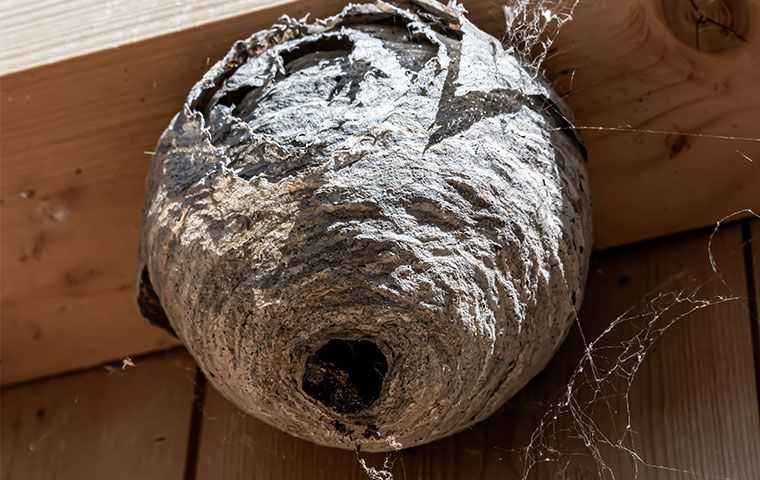
Common Stinging Insects Buzzing Around
Picture this: it's a warm, sun-drenched day in San Diego County. You're preparing for a tranquil afternoon in your backyard, perhaps a barbecue with friends or a quiet read under the shade of your favorite tree. As you step outside, however, you're greeted not just by the inviting sunshine but by a variety of buzzing, flying visitors. Insects – specifically, stinging ones – are part of the local fabric of life here, as intrinsic to our Southern California ecosystem as the Pacific breezes or palm trees. In this article, we'll delve into the world of these tiny, often misunderstood residents, with a particular focus on stinging insect control in San Diego County. Get ready to meet some of your smallest neighbors!
Why DIY Pest Control For Stinging Insects Isn't Recommended
Taking a DIY approach when it comes to managing stinging insects might seem like a cost-effective and immediate solution, but the risks and potential complications are often underestimated. Let's explore why turning to professionals is the better choice when facing the worst stinging insects.
DIY Versus Professional Pest Control: A Risky Comparison
DIY attempts often lack the specialized knowledge and tools required to safely and effectively deal with stinging insects. An ill-prepared effort to remove a nest can escalate the situation, triggering defensive behaviors in the insects and increasing your risk of stings. Furthermore, unsuccessful attempts can disperse the colony, leading them to establish new nests, potentially in more problematic locations.
The Art Of Insect Control: Why Professionals Are Your Best Bet
Professional pest control experts bring an arsenal of specialized knowledge, techniques, and tools that enable us to handle stinging insects safely and efficiently. Our experience allows us to develop targeted, practical solutions, reducing the likelihood of future infestations. Professionals can provide preventative advice and strategies, ensuring you achieve a long-term resolution rather than a quick, temporary fix.

What Stinging Insects Call San Diego County Home?
San Diego County, with its rich biodiversity, is home to a myriad of creatures, including many types of stinging insects. Let's journey into their world.
Meet Your Buzzing Neighbors
San Diego County's sunny climate is a magnet for many insect species. Among these, yellow jackets, honey bees, and paper wasps are the most common stinging insects. Their distinctive buzz is a familiar backdrop to our outdoor activities, and their presence, while sometimes disconcerting, plays a vital role in our local ecosystem.
San Diego County's Tiny Inhabitants
Yellow jackets, with their characteristic black and yellow-striped bodies, are particularly drawn to areas where humans gather, attracted by the food and drinks we often have in hand. While their presence at picnics can be a nuisance, they are formidable hunters of other insects, helping to keep various pest populations in check.
Honey bees are beloved for their role in pollination, a critical process for the survival of many plants and the production of our food crops. These industrious insects, while usually non-aggressive, can become defensive when their hives are disturbed, highlighting the need for respect and understanding in our interactions with them.
Paper wasps, recognized by their slender bodies and long, dangling legs, are frequent visitors to our homes, building their characteristic umbrella-shaped nests in the eaves and overhangs of buildings. They feed their young on caterpillars and other insect larvae, making them beneficial for natural pest control.
Diversity In The Insect World
The world of stinging insects extends beyond these common species. Carpenter bees, so named for their habit of boring into wood to build their nests, are solitary creatures, but their size and loud buzz can make them seem intimidating. Bald-faced hornets, with their distinct black and white patterns and large aerial nests, are another unique member of San Diego County's stinging insect community.
Despite their potential to sting, these insects are integral to our ecosystem. They help control other pests, pollinate plants, and maintain the health of our gardens and farms. Their presence underlines the diversity of San Diego County's natural world and the importance of informed, respectful stinging insect control.
Problems That Summer Stingers Can Pose For San Diego County Residents
It's a delicate balance we maintain with San Diego County's stinging insects, whose ecological contributions sometimes intersect with our lives in less than favorable ways. Particularly in the warm, lively summer months, the increased activity of insects might lead to several challenges associated with insect bites and stings.
Insect Stings: Not Just A Nuisance
While a sting from one of our local insects often results in temporary discomfort and a localized reaction, the consequences can be far more severe for some individuals. Allergic reactions can trigger systemic responses ranging from hives and difficulty breathing to life-threatening anaphylaxis, which requires immediate medical intervention. Even non-allergic individuals might experience large local reactions, with extensive swelling and pain that can last for over a week.
Unpleasant Summers: Insects And Your Outdoor Plans
Summertime in San Diego County is synonymous with outdoor living, from lazy afternoons in the backyard to dining al fresco and pool parties. The presence of stinging insects can disrupt these activities and create unease, especially for families with young children who may not yet know to be cautious around insects. Encounters with stinging insects can turn an otherwise peaceful outdoor setting into a source of anxiety and discomfort.
When Bugs Bug Your Home
Beyond their potential for stings, some insects can pose a challenge to our homes and properties. Yellow jackets and paper wasps, in their search for nesting sites, might choose spaces within our homes, like wall cavities or attics. Carpenter bees can burrow into wooden structures, potentially causing structural damage over time. These nests, if located near areas of human activity, increase the likelihood of unintentional disturbances and subsequent stings.
While these challenges may seem daunting, it's important to remember that cohabiting with these tiny creatures is a part of our life in San Diego County. The goal isn't to eliminate these insects – which play such crucial roles in our ecosystem – but to manage our interactions with them sensibly. This is where understanding the behavior of stinging insects and implementing appropriate measures becomes vital
How To Reduce Your Risk Of Getting Stung
Living harmoniously with our buzzing neighbors involves adopting some simple, yet effective, measures. The goal isn't to remove these insects from our environment entirely but to reduce the chances of a painful encounter. Let's explore how to lower your risk of stings from stinging insects in California.
Your Guide To A Sting-Free Summer
We can all take proactive steps to reduce our risk of stings. Here are a few practical tips:
- Dress wisely: Light-colored, smooth-finished clothing attracts fewer insects than dark clothing or fabrics with a rough texture. Avoid wearing loose-fitting garments that insects can fly inside.
- Stay scent-free: Strong fragrances from perfumes, lotions, or hair products can attract insects. Opt for unscented products when spending time outdoors.
- Food caution: Be careful when eating or drinking outdoors, especially sugary drinks, as these can attract insects. Keep food and drinks covered when possible.
- Stay calm: If a stinging insect is flying around you, remain calm and slowly move away. Swatting at the insect may provoke it to sting.
By taking these precautions, you can enjoy the summer sun without unwanted insect interactions.
Insect-Proofing Your Home And Yard
Making your property less attractive to stinging insects is another key step in reducing your risk of stings. Here's how:
- Regular inspection: Keep an eye out for nests under eaves, in attics, or in other less-frequented parts of your home.
- Secure your home: Seal cracks and crevices in the walls, doors, and window frames where insects could enter to build nests.
- Maintain your yard: Regular yard maintenance, including trimming overgrown vegetation and removing fallen fruit, can help deter insects from settling in your outdoor space.
- Manage garbage: Properly cover trash cans to avoid attracting insects looking for food.
Implementing these measures can go a long way in ensuring that your home and yard are not attracting stinging insects.
Behavioral Tips: Coexisting With Stinging Insects
Recognize that we share our spaces with these insects. Understanding their behaviors and respecting their roles in our ecosystem is key. Avoid disturbing nests, teach children to admire insects from a distance, and appreciate the crucial roles these insects play in our world. With understanding and respect, we can coexist with stinging insects.

Our California Pest Control Services
In California, We Provide Reliable Home Pest Control And Commercial Pest Control Solutions.
Why Our Customers Love Us
HomeShield Pest Control received an average rating of 5.0 out of 5 stars from over 8000+ reviews.
-
Homeshield was great to work with!“Homeshield was great to work with! My wife and I encountered a really bad termite problem at our new home during the renovation phase, and needed treatment asap so that renovation could resume. Mike drove all the way down for an inspection, and was very thorough in his explanations. He was able to match a competitor's price for the treatment and locked in a day for the following week. Daniel and Elias, the technicians, were very communicative about their ETA and did a good job explaining their respective roles. All in all, a quick and easy process. Thank you, Homeshield!”- James Y.
-
Pleasant, friendly and respectful.“Bronson announced his arrival and departure. He inquired if there was anything specific that we wanted done prior to him starting his regular service. Pleasant, friendly and respectful.”- Joseph S.
-
Will continue using homeshield!“
Amazing work! Switched from Terminex as I was tired of having scheduling issues and wanted something eco friendly for my dogs and upcoming baby.
”
I definitely recommend trying to get Jose Garcia as your technician as he was very communicative and kept us updated throughout the service process.
Will continue using homeshield!- Chris P.M. -
Humble and helpful. Does what ever we are asking for.“You guys provide very quality service. We are very happy with the service. Every time the person comes to our place to provide service is very humble and helpful. Does what ever we are asking for. Thank you.”- Arif S.
-
Excellent experience. Super professional and thorough“
Excellent experience. Super professional and thorough. Found them through yelp and they called immediately with affordable options and set up an appointment. The technician was wonderful. Would highly recommend.
”- Samantha S. -
Quote came within minutes and price was very reasonable.“
Dee provided a very thorough and detailed inspection. Walked us through the entire process and what we could expect throughout the initial services and beyond. Quote came within minutes and price was very reasonable.
”- Jason D. -
Ben was FANTASTIC“
Ben was FANTASTIC in every way, He came to give me an estimate on my home, was on time, polite, knowledgeable, and extremely professional in how he handled everything. Had 4 other termite co. to give me an estimate, not even close to Ben's expertise, I would give him a 10 if I could. Will definitely use him in all my other projects , they are a lot since I am in real estate and have many clients.
”- Judy M. -
Victor, was very professional, helpful and informative.“
We had a great experience. They were able to work with our schedule to make a quick appointment. The service professional, Victor, was very professional, helpful and informative.
”- Mark S.

Featured On








.svg.2405150737550.png)




